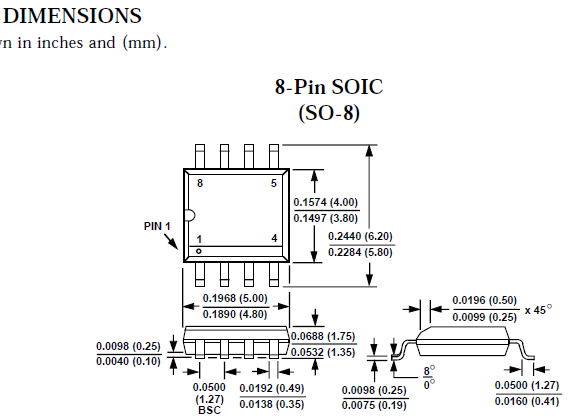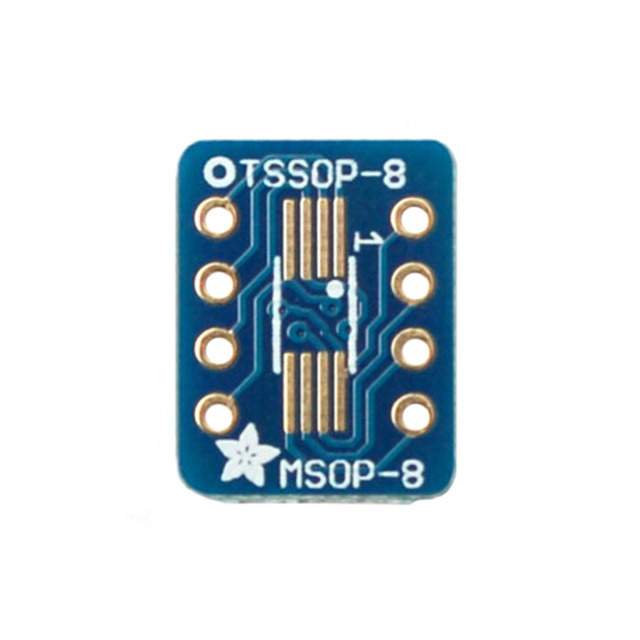The Elenco 9425 is a breadboard. ("Circuit board" usually means a PCB.) Breadboard holes are 0.1 inches apart. Through-hole DIP packages commonly use this same spacing, with the distance between the pin rows being 0.3 or 0.6 inches.
I'll walk you through how to pick a package on Digi-Key. The key is to use the filters one at a time to narrow down the list of products. First, unless you already have a package in mind, select your application requirements (supply voltage, output current, etc.) It's also a good idea to select the low-volume packaging types unless you really want to buy a reel of 5000 units. And always check "In stock". Once that's done, make sure that you select Through Hole for the mounting type:

You'll be left with the two package columns. I find that Supplier Device Package is usually more helpful, so let's start there. For breadboards, you want a dual-inline package (DIP). They're made from a few different materials (PDIP, CDIP, etc.), but don't worry about that.
Now the thing about Digi-Key is that it has all kinds of weird stuff. So if you just select all of the DIP packages, you'll see things like this isolation op amp or this power op amp module. It helps to know which packages are more common. This comes with experience, but you can also use Digi-Key to help. If you select one or more filter options, you can see how many products are left. For example, here's what it looks like with the 8-pin DIPs selected. (I shrunk my browser window to keep the picture small.)

There are over 700 products left, which means 8-pin DIPs are common packages for op amps. Repeating this for the other even numbers of pins, I get:
- 8 pins: 769
- 10 pins: 3
- 12 pins: 13
- 14 pins: 310
- 16 pins: 64
- All others: 15
So 8, 14, and 16 pins are the most common. If you select only those packages, you can avoid a lot of weird stuff.
Coming at this from the other direction, if you find an op amp you like in the search list or if you're searching by part number, look at the picture on the left to see if it's in a package you want.

To make sure you order the right one, check the datasheet to see which part number(s) come in which package. Here's a table from the AD817 datasheet:

For DIP, you want a part number that starts with AD817AN, not AD817AR. (Note: This is an unusually clear and simple ordering guide. Other datasheets may not be this helpful.)
If you're not familiar with the packages, check the drawings near the end of the datasheet:


This can help you figure out whether a package can be hand-soldered at all. Some of them have heat sink pads on the bottom or pins that are a fraction of a millimeter apart.









DIP<number here>package. \$\endgroup\$